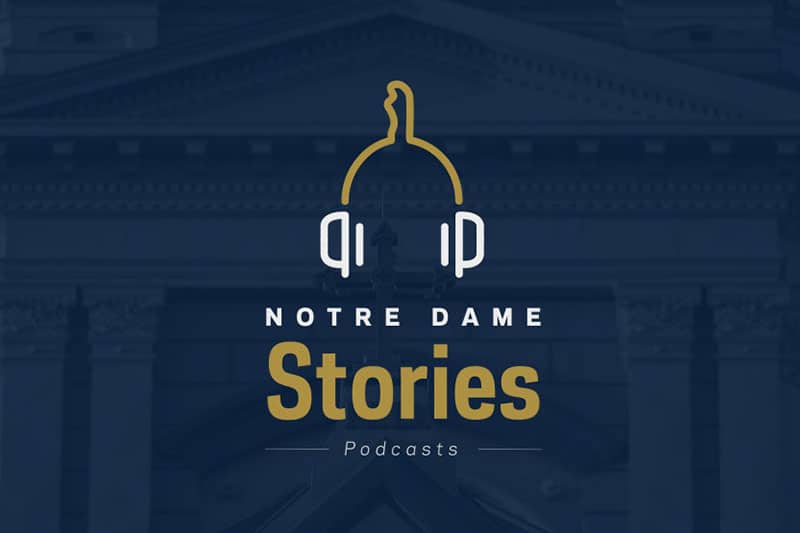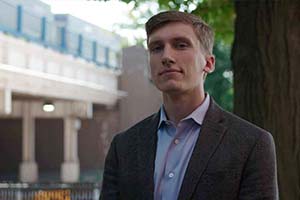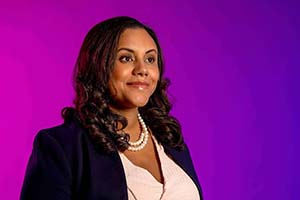
Editor's note The Notre Dame Exoneration Justice Clinic celebrated its first exoneration in July 2021 when Elkhart County prosecutors dismissed a murder charge against Andy Royer, who spent 16 years in prison despite being innocent.
“The law students and lawyers in the Notre Dame Exoneration Justice Clinic have worked tirelessly to correct a gross miscarriage of justice and set an innocent man free,” said Professor Jimmy Gurulé, one of Mr. Royer’s attorneys at the Exoneration Justice Clinic and a professor at Notre Dame Law School. “While this story has a happy ending — Mr. Royer has been reunited with his family — there is no way to adequately compensate Mr. Royer for spending 16 years in prison for a crime he did not commit.”
The audio in this story is unedited.
Elliot Slosar was in a Zoom meeting in April with Notre Dame law students working on a wrongful conviction case when he got a call asking him to pick up Andy Royer, whom a judge had just freed after 16 years in prison.
“The students watched me freak out,” said Slosar, a Chicago attorney and co-teacher of the Notre Dame Exoneration Justice Clinic (NDEJC). “Oh my God, we just won Andy’s trial. One of the students got to meet us at the jail with Professor [Jimmy] Gurulé and Andy’s family. There are moments like that that you can’t recreate.”
Royer had been convicted of murder in the 2002 strangling of a 94-year-old woman who lived in his apartment building in Elkhart, a city of about 50,000 people a half hour’s drive from Notre Dame. Royer maintained that the police exploited his intellectual disability to coerce him into a false confession 10 months after the murder.
After more than four hours of intense interrogation, a detective turned on a tape recorder. Royer — who stands 6 feet, 7 inches and weighs more than 300 pounds, yet his mother says he has the mind of a child — changed his story repeatedly in response to the detective’s questions during a halting, 18-minute confession. Not realizing the gravity of the situation, he then asked, “Can I just go home now?”
Royer interrogation confession, 2003
DETECTIVE: Did you choke her with a rope? And where’d you get this rope at?
ROYER: Uh … I … just found it. It was just laying there, you know.
Play audio clip
Investigative work through NDEJC found that the only two trial witnesses have since recanted their testimony. Royer’s co-defendant was also convicted in 2005, but a judge overturned her sentence in 2012 after new analysis proved that a fingerprint found at the crime scene was not hers. Yet Royer remained incarcerated for another eight years.
Paula Ortiz Cardona, a Notre Dame law student who worked on Royer’s case for three years and participated in his evidentiary hearing, was ecstatic about his release.
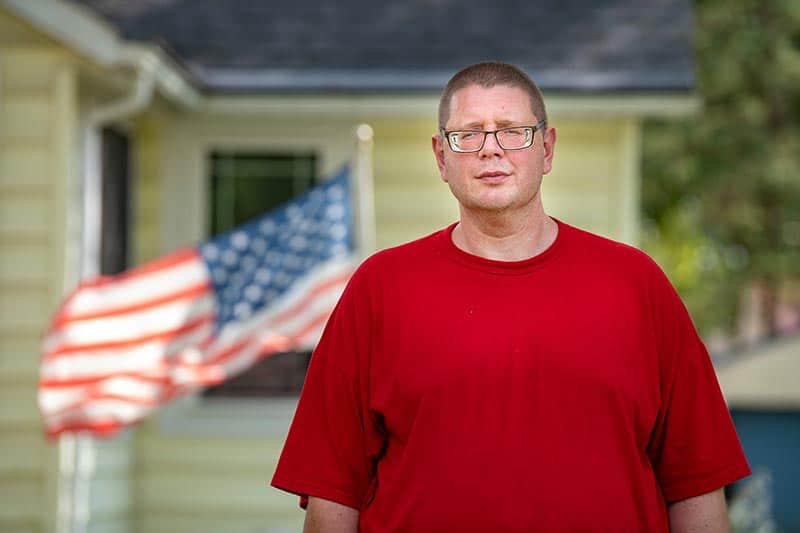
“We all cried,” Ortiz Cardona said. “We were all very excited — I honestly couldn’t believe it.
“It changed my life. I hope what Andy’s case brings to Elkhart and to law students is that we lawyers can make a difference. The criminal justice system is flawed, but there are avenues that work. There are good people in this world. It should bring people hope. It brought me hope.”
Victories like Royer’s are rare in exoneration work, but the NDEJC is working on eight cases in Indiana that the instructors and students believe deserve to be overturned. The project started as a volunteer club in 2016 and grew into a for-credit externship before turning this year into a legal clinic, meaning that it functions as a stand-alone law firm that can represent clients. Slosar co-teaches the class with faculty member Jimmy Gurulé, a former federal and state prosecutor and an expert in criminal law.
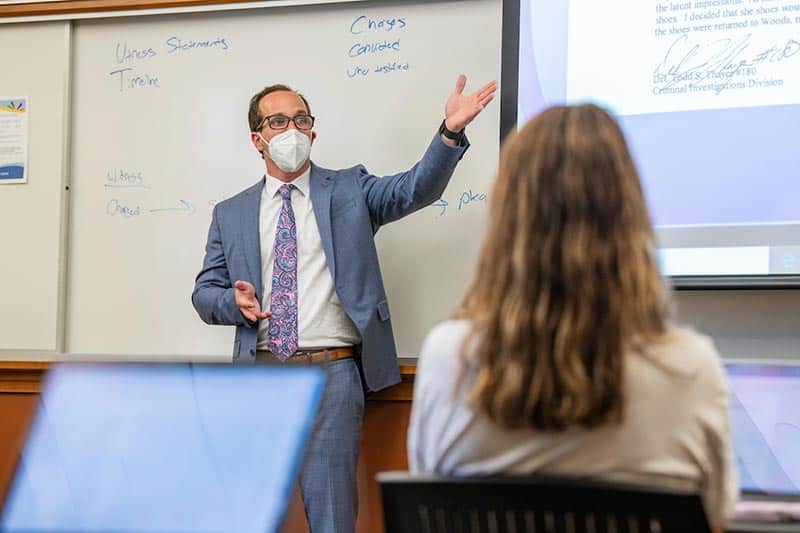
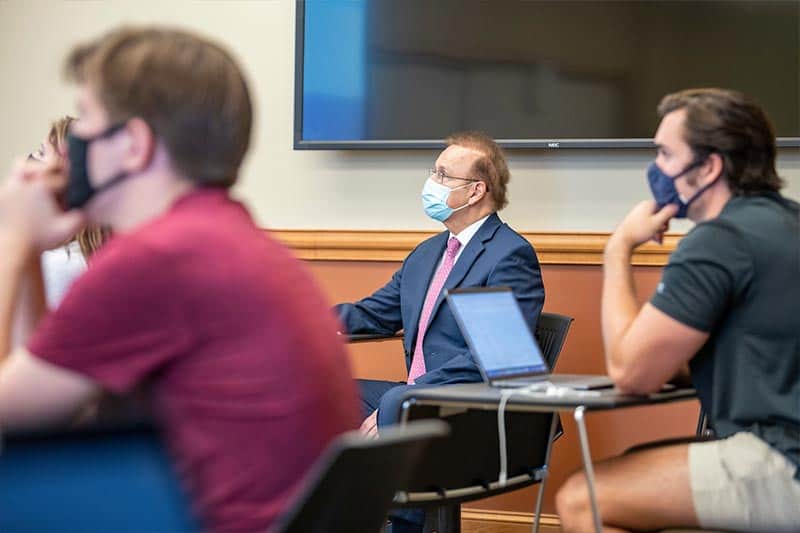
On the first day of class in August, Gurulé laid out the case: Wrongful convictions are a serious problem nationwide, he said, with nearly 2,700 exonerations granted since 1989, many through DNA evidence that improved over time. That’s one about every four days. At least 130 of those cases were death sentences, meaning that the wrong person would have been killed in the public’s name.
“How does this miscarriage of justice happen in this country of laws?” Gurulé thundered. “With all of these constitutional, procedural protections, the innocent are still convicted at an unacceptable rate.”
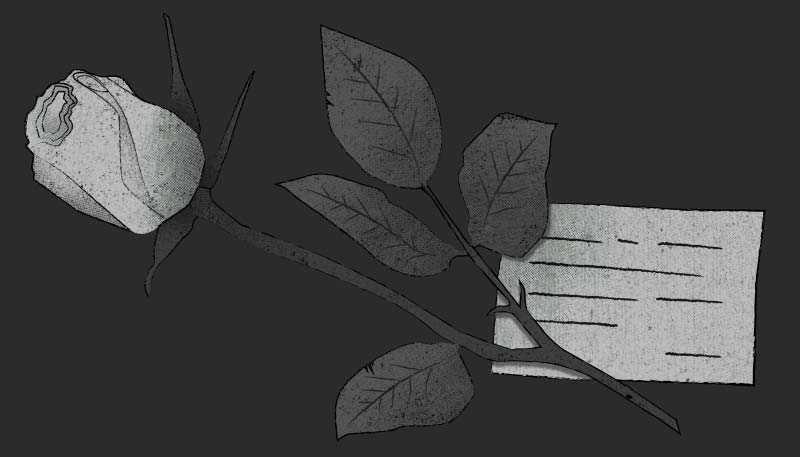
Humble Beginnings
The program traces its origins back to 2016 when a handful of law students decided to reactivate an innocence club that had gone dormant. Tia Paulette was one of the students and became its co-founder and first president.
“We would talk and dream of all these things in the abstract, but we were really like, OK, so what do we do?” Paulette said. “How do we penetrate the law school with all this important information on the hardships of criminal justice and wrongful convictions?”
They came up with a three-pronged approach: awareness, advocacy and action. They also recruited Gurulé to be their adviser from the start. For their first big event, Paulette bought dozens of white roses with her own money and placed them in the Law School Commons (gathering and eating area) with cards containing facts about current wrongful conviction cases.
“You couldn’t turn a blind eye to them,” she said. “It wasn’t that people didn’t care about these issues. There was just no awareness. The response we received, we knew we hit a chord within their hearts.”
With interest growing, the club turned to advocacy in 2017 when Gurulé suggested the students host an event featuring Slosar and his client Keith Cooper, who had just become the only person in Indiana history to win a governor’s pardon based on actual innocence.
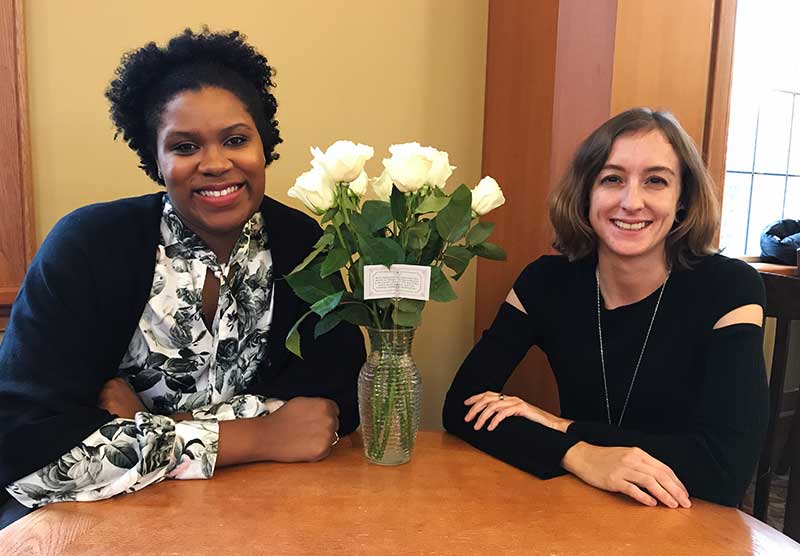
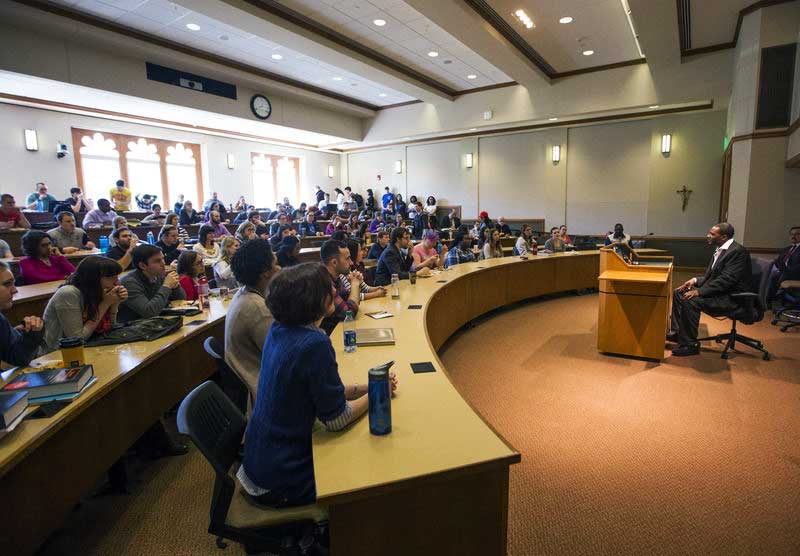
“So they became pretty much our grand opening,” Paulette said. “That particular event, oh my God, I could never forget it. It was one of the most life-changing experiences I’ve ever had. It was phenomenal.”
Cooper shared his story to a jam-packed auditorium of students and faculty, telling them about how he was framed for a 1996 shooting and robbery in Elkhart. He was sentenced to 40 years in prison based, essentially, on the fact that he fit the description of being tall, thin and Black. He had served nine years before he was offered a sentence modification to time served in 2006 if he agreed to withdraw his pending post-conviction petition. Though innocent, he accepted so he could help his family rather than wait years for another trial.
“There was hardly a dry eye in that room,” Paulette said. “Here’s this man in the physical form, who is just this horrible token of the hardships of the criminal justice field, and I never cease to not be speechless when I think about what it was like to sit there and listen to him.”
Keith Cooper at ND Law School, 2017
“I was innocent, just like ya’ll are.”
Play audio clip
Slosar also spoke to give the legal viewpoint. As someone who had worked on exoneration cases as a law student and argued for Cooper’s pardon before passing the bar, he urged them to get involved right away.
“They had such passion for getting justice and being a different kind of lawyer like Notre Dame teaches, and I shared my experience with them and really challenged them,” Slosar said. “There’s a community 15 miles away where there’s a lot of injustice, and they’re in a position to be able to help fix that.”
At a dinner afterward, Paulette and club co-founder Erika Gustin took up Slosar’s challenge to work on his cases in Elkhart. “We ran with it,” Paulette said. “It was exactly what we needed — this opportunity of a lifetime that really just fell in our lap.”
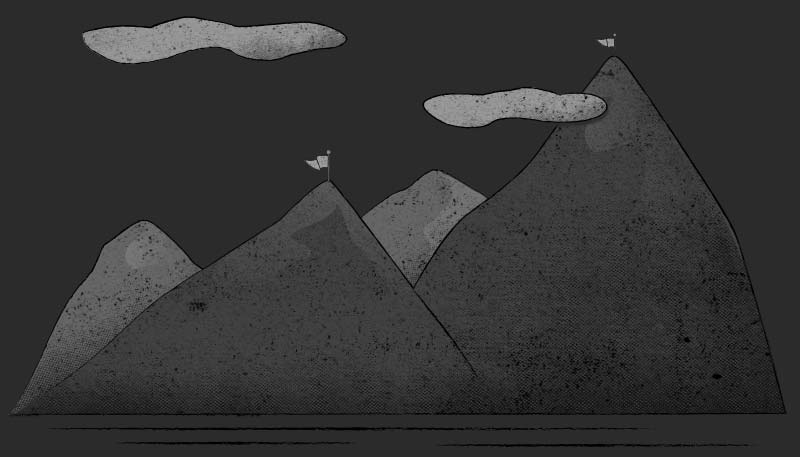
Organic Growth
More than 100 students attended their first meeting the next year, so Paulette and Gustin organized the students who signed on into volunteer teams to work on several cases with Slosar. Meanwhile, Gurulé urged them to keep the momentum going and turn the club into an externship that would earn the students academic credit.
“They were committing endless, countless hours to these cases for no credit at all, for absolutely nothing,” Paulette said. “They just absolutely loved the opportunity and they were willing to give everything that they had to these cases.”
Gurulé pushed for the externship because it would give his students real-life experience practicing law as opposed to discussing it in theory.
“The exoneration project gave me a lot of purpose.”
—Ortiz Cardona
“First, it provides them an intimate insight into the criminal justice system,” he said. “Second, it affords them an opportunity to take the learning, the knowledge, that they’re gaining in law school and apply it in a very impactful way to address and correct the miscarriage of justice resulting from a person being wrongfully convicted of a crime.”
Ortiz Cardona agreed, noting that working on Royer’s case motivated her to get through law school to pursue innocence work in her career. She said she identified with the feelings of Bryan Stevenson, the Alabama innocence lawyer made famous in the recent movie “Just Mercy.”
“He felt disengaged from the law itself in practice, and I went through a similar experience my first year and a half,” she said. “I kept saying to myself, ‘What am I doing here? I don’t know if this is what I want to do.’ The exoneration project gave me a lot of purpose.”
Gurulé presented the externship to the faculty in the spring of 2018 and it was approved as Paulette graduated, a fitting legacy for the countless hours she and Gustin poured in.
“We just sat down and thought, ‘Did we really just do that?’” Paulette said. “Did we really take a club that started out as absolutely nothing — no funding, no awareness, no infrastructure — and make this an externship?
“We knew we would never really be able to participate. But it really wasn’t about us. It was about the overall cause and people like Keith Cooper and Andy Royer.”
This fall, the externship became the law school’s sixth legal clinic. This will allow faculty and students to represent clients as the first chair at trial. With additional support from benefactors, NDEJC hopes to continue to expand its footprint to involve more students and pursue justice for more clients.
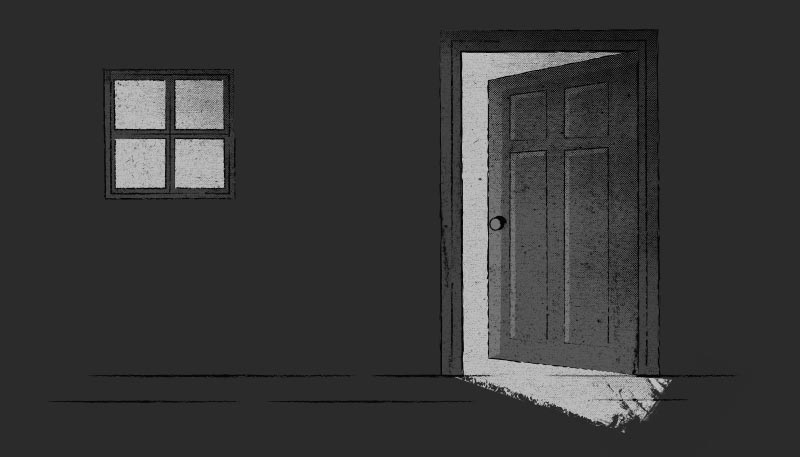
Case of Inspiration
Keith Cooper’s worst day in prison was when his sister sent him a letter saying that his wife and three kids were living in a homeless shelter.
Not long after, he got another letter. His lawyer wrote that he was being offered a deal to get out right away — no 30 more years, no second trial, no parole. He could get his family out of the shelter and take care of them. All he had to do was accept the robbery charge as time served.
“And I remember praying to God. And God answered me. He said, ‘Yeah, I’m giving you a door. I’m going to open this door for you. Take it.’”
—Keith Cooper
“It was the hardest choice of my life,” said Cooper, wearing a cross on a chain and sitting at a fold-out picnic table behind his home south of Chicago in late August.
“They want me to give up my right. All day I thought about it: Keith, you’ve been in here nine years for something you didn’t do. This is your opportunity to go home and save your family. And I remember praying to God. And God answered me. He said, ‘Yeah, I’m giving you a door. I’m going to open this door for you. Take it.’”
Besides, he felt he’d been railroaded once and figured it could happen again if he waited years for another trial. But that agonizing decision would cost him plenty in the end.
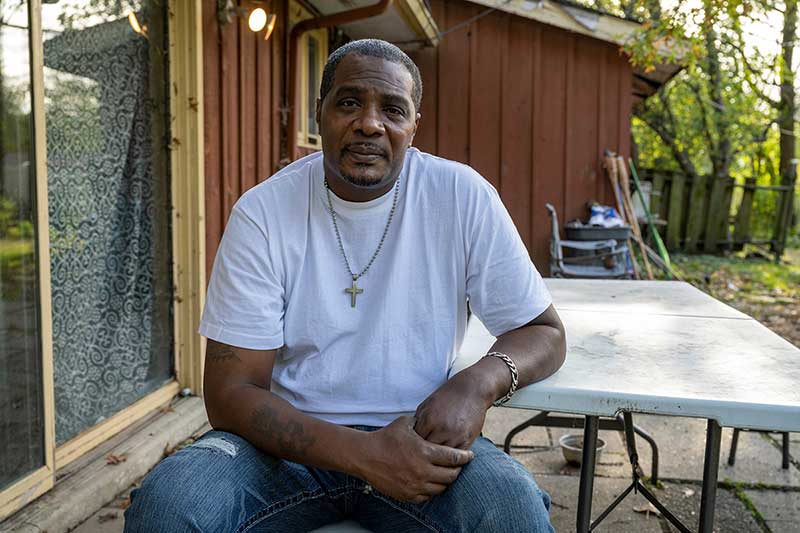
Cooper had been 29 when he moved from his native Chicago to Elkhart with his wife and his children, Keith Jr., 8, Lakeisha, 6, and Deevon, 1. They moved for the promise of jobs, and Cooper found one at a lumberyard and another installing windows in RVs.
On the morning of Jan. 2, 1997, he said he was walking home from a grocery story with eggs, bacon, cereal, milk and a newspaper, planning to watch cartoons and eat breakfast with the kids. Police cars roared up to him while he waited at a train crossing, the officers pointing guns and yelling.
A woman’s purse had been snatched earlier, and Cooper fit the description of tall, thin and Black. They put him in a police car and took him to a home, where the woman claimed it was him — even though she was about 25 feet away and he never got out of the car. “And from that, my life was a living hell,” Cooper said.
His wife sold their belongings to pay household expenses; his mother took a loan on her home to pay for bail. He beat the charge, but he knew worse was coming because an officer told him he’d nail him for an armed robbery and attempted murder months earlier at Cooper’s apartment complex. Police said he’d committed the crimes with Christopher Parish, a man Cooper never met until decades later at a Christmas party at Slosar’s law firm.
The victims and several witnesses misidentified Cooper at a one-day bench trial, and a jailhouse informant claimed Cooper admitted his guilt while in jail. Prosecutors said Cooper left his hat at the scene. Years later, DNA on that hat would help unravel the case against him.
“My family thought I was going home,” he said of the trial. “They saw me get carried away with shackles on. My daughter still remembers that day like it was yesterday. I can hear my kids crying. ... I can hear the tears.”
“It’s like they was determined to find me guilty, to place me in that damn penitentiary, and they succeeded.”
Pulling into the Wabash Valley Correctional Facility in Carlisle, Indiana, terrified Cooper. More than 300 guys in the yard stopped to stare at the fresh meat arriving that afternoon. “I saw what they was doing to guys in that penitentiary,” he said. “I always saw it on TV, but to live it ... it’s 10 times worse than what you see on TV.”
He decided to avoid trouble by going to school and church. He stopped telling people he was innocent — because they would respond that they were too.
“I didn’t want to die in prison,” he said. “I didn’t want my kids to give up their hope that one day they might see me again. So, I let that burn inside of me to be my strength. I used it as my tool of survival.”
Cooper took his deal and walked out in April 2006. Parish stayed and fought, and he would later win a $4.9 million settlement for his wrongful imprisonment. That option was lost to Cooper, but he did meet Elliot Slosar, who was then a law student and investigator for Parish’s case.
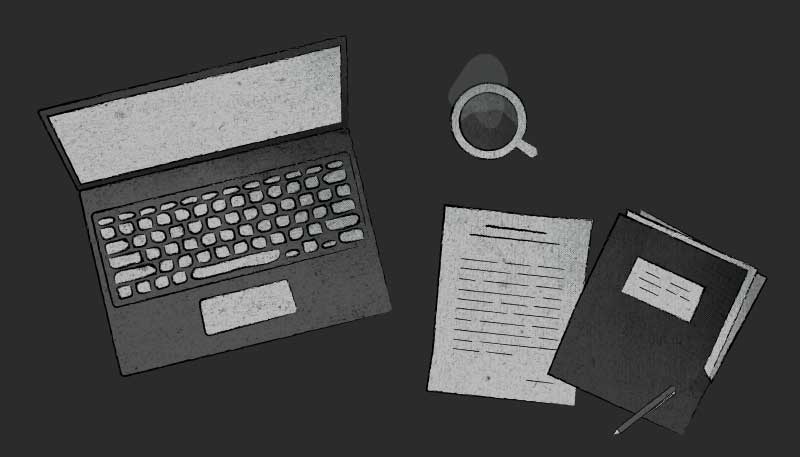
Young Gun
Slosar grew up in Southern California and recalled watching portions of the O.J. Simpson trial as a kid and the riots after the Los Angeles police beat up Rodney King. Those historic events happened in his backyard. He would watch shows like “Unsolved Mysteries” and “Cops,” but his grandmother noticed he always rooted for the criminals to get away.
“When I was a younger child, I thought if I was a lawyer, I could free that person. And so that was my motivation for a very long time.”
—Elliot Slosar
“To be totally candid, there was somebody in my family who was incarcerated,” he said. “When I was a younger child, I thought if I was a lawyer, I could free that person. And so that was my motivation for a very long time.”
After moving to Chicago during high school, he went to DePaul University for political science, graduating in 2008. He did internships with the domestic violence unit of a prosecutor’s office and in the death penalty unit of the appellate defender’s office. While at DePaul, he attended an event that included an exoneree from the Central Park Five, the teens mistakenly convicted of rape in New York’s Central Park in 1990, which left him “so moved and outraged about what happened to them.”
Slosar remained at DePaul for law school because it offered a night program. During the day, he began work as an investigator at Loevy & Loevy, a national civil rights law firm based in Chicago, as well as the Exoneration Project at the University of Chicago Law School. The firm was representing Parish and uncovered evidence of Cooper’s innocence as well. Slosar’s first assignment was to interview the victims, who would eventually recant their initial identifications after Slosar’s team used DNA to find the real shooter.
“I actually argued Keith’s pardon case a week or two before I took the bar exam,” Slosar said. “I wasn’t a lawyer then, but anybody in America can draft a pardon petition.”
After leaving prison, Cooper found his family and a job. He got them out of the shelter by driving a forklift for just above minimum wage at a shipping warehouse. The reunion was difficult — they’d all grown apart, and he eventually split with his first wife, Sheryl. He also realized that his agreement made it nearly impossible to win a settlement like Parish had.
It didn’t matter that the jailhouse informant recanted, DNA had identified the real shooter and the victims no longer believed Cooper was the culprit. Or that the officer who had framed Cooper was demoted for a history of coercive investigative tactics and improper relations with prostitutes he used as informants.
Slosar began a pardon campaign to take the felony off Cooper’s record. He petitioned Indiana’s pardon and parole board in 2011 and won a unanimous recommendation for an actual innocence pardon in 2014. Still, former Gov. Mike Pence took no action on the case before he left office to become vice president in 2017.
“Everybody that was involved with my case got a promotion,” Cooper said. “The prosecutor who prosecuted my case became a judge. The county prosecutor became the state attorney general. The governor became the vice president.”
New Gov. Eric Holcomb granted the pardon within a month of taking office in 2017. The news stories about the state’s first pardon for actual innocence caught the eye of Gurulé, which is how Cooper and Slosar came to speak to the Notre Dame Law School that April. Slosar knew from his own experience that motivated students could get to work and help right away.
“If you want to free innocent people, use your law school experience to start that now instead of waiting until after you pass the bar,” Slosar said.
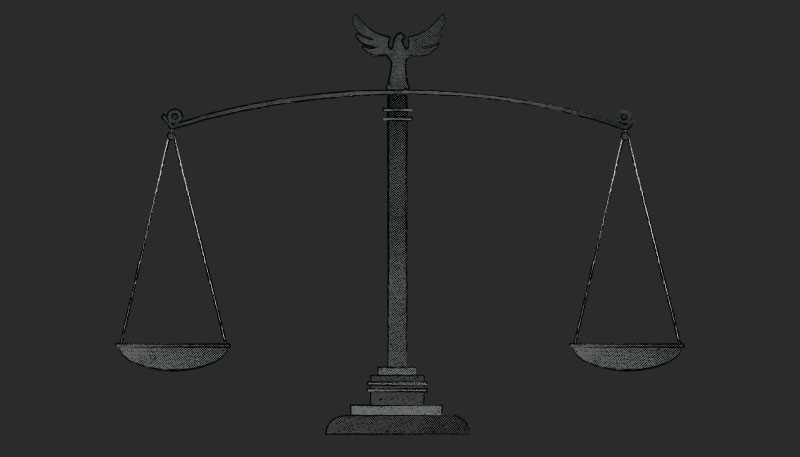
Belated Justice
Slosar first learned of Andy Royer after Cooper’s case inspired The Indianapolis Star to run an investigative series on wrongful convictions in the state. Soon afterward, Royer’s attorney contacted Slosar about getting involved.
“It really struck a chord with me, about this very vulnerable person who clearly was mentally disabled and led into a false confession,” Slosar said. “I remember I was on a vacation with my wife, and I actually sat under this little hut on the beach and I read Andy’s entire trial and appellate record.”
Slosar took on the case and enlisted ND law students like Ortiz Cardona to help. He was immediately impressed by their dedication, noting that one student drove to Indianapolis after class in the middle of winter to interview a witness. The student didn’t even know if the witness, Nina Porter, would open the door and talk.
“When I think of the evidentiary hearing we had for Andy in the fall, I remember looking back in the courtroom and seeing it filled with Notre Dame students and seeing some faculty there,” Slosar said. “It is very full circle. The students took me up on that challenge. They have been incredible, the work they’ve done in these cases.”
Some of the facts they discovered for the post-conviction relief appeal were astounding. The witnesses tying Royer and his co-defendant to the crime both recanted. Porter was threatened with losing her children if she didn’t cooperate. When Slosar, an investigator and the student knocked on her door to ask about the case, Porter was relieved to have the chance to correct the record.
Nina Porter affidavit interview (witness in Royer case)
SLOSAR: I’m going to ask you some questions about this report to see if, you know, some of this stuff is true and some of it is false, and sort of see where you got this information.
PORTER: I can save you the time. I didn’t know anything about it.
Play audio clip
The only physical evidence was a fingerprint at the scene, which the prosecution said was that of Royer’s co-defendant, Lana Canen. It later turned out that the detective who analyzed the print was not qualified to do so and had identified the wrong person, finger and even hand. When a state lab analysis excluded Canen as a match, she was exonerated.
Royer’s confession was the biggest obstacle. Police officers knew of his mental limitations, yet his public defender never called an expert for why people falsely confess. In an earlier appeal, a judge found that to be a reasonable choice, noting that Elkhart juries don’t appreciate outside experts.
That claim sparked Slosar’s interest. He discovered that the judge had been the prosecutor in a well-publicized case in the early 1990s that involved a coerced false confession. Edgar Garrett admitted to killing his daughter by hitting her in the back of the head with a pipe. He even re-enacted it.
“The problem for Elkhart was that about a week later they found the body, and his daughter was stabbed to death,” Slosar said. “The officer overseeing the Royer interrogation was the officer who interrogated Garrett,” who was acquitted in 1995 after a jury watched the interrogation video.
Other officers in the department admitted serious doubts about Royer’s guilt. Former lieutenant Peggy Snider signed an affidavit describing his interrogation as “one of the worst I have ever seen in my 34 years in the Elkhart Police Department” before backtracking months later.
Former police lieutenant Peggy Snider
“… I don’t think Andy did it.”
Play audio clip
NDEJC successfully petitioned to move the post-conviction relief case to another county, which led to a win after three unsuccessful appeals. Ortiz Cardona and another student each took two witnesses at the hearing. Ortiz Cardona said she was so nervous that she did not remember her expert witness examination, though she later read the transcript and saw she did well.
“I blacked out and it was the best experience of my life,” she said. “And I realized if I could do it as a law student, I can do it as a lawyer.
“Reading the judge’s findings was very validating. It felt incredible to see some of your work, your investigation, your words even, in his opinion. He basically validated everything we said.”
Still, Indiana Attorney General Curtis Hill’s office appealed the ruling, claiming that the judge was wrong to release Royer on evidence that the state does not think is “newly discovered.” Hill was the elected prosecutor in Elkhart County at the time of Royer’s trial.
Exoneration cases are difficult to win because the presumption of innocence has flipped, placing the burden on the defense. Court rulings also require that evidence must be new and likely to produce a different result at trial, and that it couldn’t have been discovered before the original trial. It’s a high bar. NDEJC also tries to identify the real perpetrator as a means to free their clients, but also because the victim of the initial crime deserves justice.
In early September, the three law students on his current team met Royer and took him out for ice cream. He lives with his mother and stepfather, helping them build a new house. Long walks with his dog have helped him lose weight. He likes to cook, a skill he learned in prison. He ordered his ice cream in a cup because he had a cone the last time and a lot landed on his shirt.
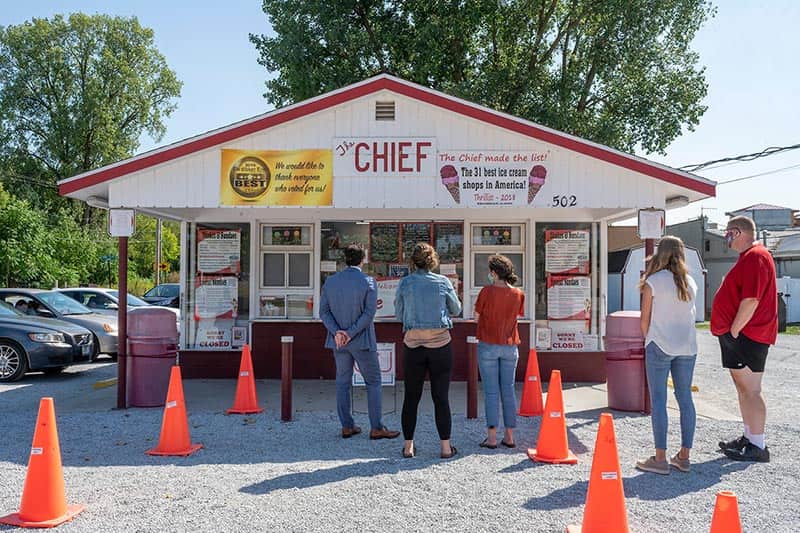
“I’m a whole different person now,” Royer said. “I’m not depressed anymore.”
The transition hasn’t been so easy for Cooper. He quit work after getting pardoned, which he now considers a financial mistake. He often watches his and his new wife’s 12 grandkids. But he suffers from post-traumatic stress, sometimes sleepwalking in the night and fighting phantoms in terror that he is still locked up. He is now suing Elkhart for his wrongful imprisonment.
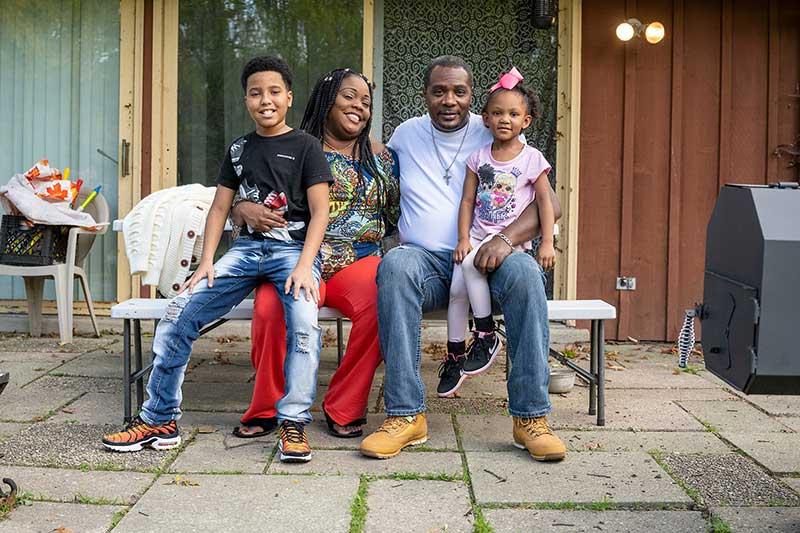
Last spring, Slosar and his students were discussing which new cases they should accept. Like many other meetings during the pandemic, it was a Zoom call. When one team argued to take a case for a convicted murderer, Slosar had reservations. So he called a witness, and the students got an unexpected surprise watching it live on their screens.
“She said, ‘I know what you’re calling about,’” Slosar recalled. “‘[He] is innocent. My son did this murder.’ She talked about how her son came to her house after and he was bloody. He said, ‘Mom, I left my ID at the scene.’ And she had been on the phone with him when he got into this argument and put down the phone and she heard the gunshots. It was just so compelling.”
And the NDEJC is off and running again.
